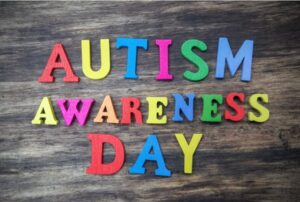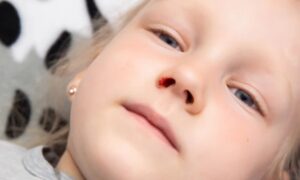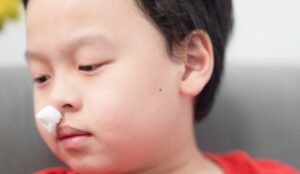When your child is diagnosed with Attention-Deficit/Hyperactivity Disorder (ADHD), it can feel overwhelming as you figure out how to best support them. While ADHD is a lifelong condition, the good news is that there are many effective ways you can help your child at home to manage their symptoms, build important skills, and thrive.
In this article, we’ll share practical strategies and tips that can help you create a supportive environment for your child with ADHD. These tips are designed to complement any professional treatments your child may be receiving, such as therapy or medication.
1. Establish a Routine
Children with ADHD often struggle with organization and time management. One of the most effective ways to help your child stay on track is to establish a predictable daily routine. This helps your child know what to expect and reduces anxiety about what comes next.
Tips for creating a routine:
- Use visual schedules, such as charts or calendars, to break down the day’s activities.
- Stick to a consistent bedtime and wake-up time to ensure your child gets adequate rest.
- Break tasks into smaller, manageable steps. For example, if your child needs to complete homework, break it down into 15-minute intervals with short breaks in between.
- Use timers to help with transitions between activities.
2. Create a Calm, Organized Space
A cluttered or noisy environment can be distracting for children with ADHD. Creating a calm and organized space where your child can focus on their tasks is essential for their success. This space should be free from distractions like TV, noisy siblings, or other potential interruptions.
Tips for setting up a focused space:
- Choose a quiet area in your home where your child can complete homework or other activities.
- Minimize distractions by removing unnecessary items from the space.
- Keep necessary materials—such as pens, paper, and books—organized and within reach.
- Use noise-canceling headphones if needed, to block out background noise.
3. Encourage Positive Reinforcement
Children with ADHD may struggle with maintaining focus and impulse control. Positive reinforcement is a powerful tool that can encourage good behavior and help your child stay motivated. Recognizing and rewarding your child’s efforts—whether they succeed or not—can help them develop a sense of accomplishment and confidence.
Tips for using positive reinforcement:
- Use a reward system, like a sticker chart or token system, to reward positive behaviors (e.g., completing homework on time).
- Offer verbal praise when your child does something well, even if it’s a small achievement.
- Reinforce positive behavior immediately to help your child make the connection between the behavior and the reward.
- Focus on effort rather than just results. Praise your child for trying hard, even if they don’t complete the task perfectly.
4. Use Clear and Simple Instructions
Children with ADHD often struggle with processing multiple instructions at once. To help your child stay focused and complete tasks, it’s important to give clear, concise, and simple instructions. Break down tasks into small steps, and be sure to check in frequently to make sure your child understands what they need to do.
Tips for giving clear instructions:
- Use short sentences and simple language.
- Give one instruction at a time. For example, instead of saying, “Get your shoes and coat and put them in the car,” say, “First, put your shoes on.”
- Encourage your child to repeat the instructions back to you to ensure they understand.
- Offer guidance as needed, but give your child time to complete tasks independently.
5. Incorporate Physical Activity
Exercise is essential for children with ADHD. Physical activity helps burn off excess energy, improve focus, and reduce impulsivity. Whether it’s organized sports, outdoor play, or simple stretching exercises, movement can have a positive impact on your child’s ability to regulate their behavior and manage symptoms.
Tips for incorporating physical activity:
- Encourage outdoor play or activities like walking, swimming, or biking. Physical movement can be a great way to release energy.
- Set aside time each day for exercise, such as a walk after school or a dance session at home.
- Consider enrolling your child in a team sport or other group activities that help them build social skills and channel their energy.
6. Promote Healthy Sleep Habits
Sleep is crucial for every child’s development, but children with ADHD may struggle with sleep due to issues like restlessness or difficulty winding down. Poor sleep can exacerbate symptoms of ADHD, such as irritability, poor concentration, and impulsive behavior.
Tips for improving sleep:
- Stick to a consistent bedtime and wake-up time, even on weekends.
- Develop a calming bedtime routine to help your child wind down. Activities like reading, taking a warm bath, or listening to calming music can help.
- Keep your child’s bedroom cool, dark, and quiet to promote better sleep quality.
- Limit screen time before bed, as the blue light from phones, tablets, and TVs can interfere with sleep.
7. Set Clear Expectations and Boundaries
Children with ADHD often need extra support when it comes to behavior management. Setting clear expectations and boundaries will help your child understand what is acceptable and what is not. Consistency is key to helping them learn appropriate behavior and avoid confusion.
Tips for setting expectations and boundaries:
- Be consistent in your rules and expectations. Make sure the whole family is on the same page when it comes to discipline and routines.
- Use visual reminders, such as charts or posters, to reinforce the rules in your home.
- When your child misbehaves, calmly explain the consequences and follow through with them consistently.
- Keep your expectations realistic, and allow your child some flexibility to make mistakes and learn from them.
8. Foster Emotional Support
Children with ADHD often face emotional challenges, such as frustration, anxiety, and low self-esteem. Providing emotional support is crucial for helping your child feel understood and empowered. Show them that they are loved and accepted, and encourage them to express their feelings.
Tips for fostering emotional support:
- Encourage open communication. Let your child know it’s okay to talk about their feelings and struggles.
- Offer reassurance and praise for efforts, not just accomplishments.
- Consider seeking professional support, such as counseling, to help your child manage emotional challenges related to ADHD.
Why These Strategies Matter
Creating an ADHD-friendly environment at home can help children with ADHD build essential life skills, improve their self-regulation, and foster positive relationships. By using these strategies, you can help your child manage their ADHD symptoms, develop routines, and gain confidence in their abilities. Although ADHD can present challenges, with the right support, children with ADHD can succeed and thrive.













